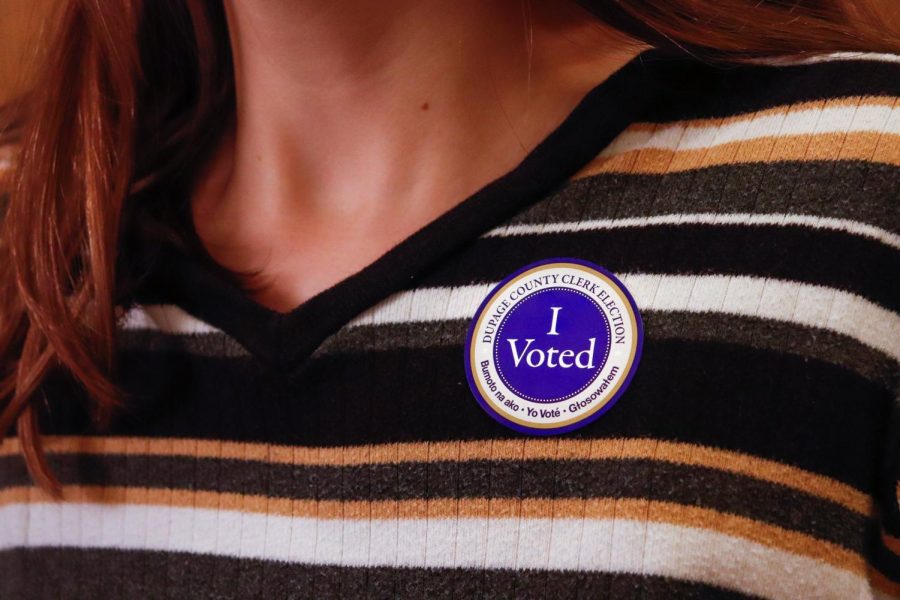Complex history of voting boils to unprecedented 2020 election
Nov 2, 2020
With election day just around the corner, spectators have touted that this year’s presidential run is one of the most important elections in modern United Stated History. After over 500 days of campaigning since their candidacy announcements, incumbent President Donald Trump and former Vice President Joe Biden are in for the showdown of a lifetime.
While the presidential race may look different today, it’s pertinent to reflect on the history of the iconic democratic practice and how our past shaped the way we vote today.
With almost 87 million Americans having cast their early votes for the 2020 election as of Oct. 30, it’s easy to see how far voting participation has come. Looking back at the first presidential election in 1789 that saw George Washington become the country’s first president, only 43,782 individuals voted in the Federalist and Anti-Federalist elector parties.
According to MountVernon.org, Washington’s campaign also cost him $0, he did absolutely no public campaigning and even cast doubt on whether he would take the job if elected.
The history of voting rights also tells a story of early American democracy begrudgingly slowly bestowing rights to individuals they previously held as non-citizens. In 1776, voting was controlled by individual state legislatures, and only white men aged 21 and older who owned land could vote.
In 1780, the 15th Amendment eliminated racial barriers to voting; however, many states continued voter discrimination practices. Poll taxes, literacy tests, fraud and intimidation still prevented many from voting, and Indigenous peoples were still denied the right to vote. By 1924, the 19th Amendment had been ratified, guaranteeing women the right to vote and run for office, and the Indian Citizenship Act finally granted Indigenous people’s citizenship and voting rights.
Flash forward to 1964, which saw the passage of the federal Civil Rights Act that ensured all men and women aged 21 of older, regardless of race, religion, or education, would have the right to vote. In the 1964 election, 109 million individuals were registered to vote, and voter turnout was 62.8%. Today, there are over 5.4 million registered voters in the state of Michigan alone, making it the third highest state with voter registration at 71.9%.
In 2020, while the law may state that everyone has the right to vote regardless of race, minority communities still face high levels of voter suppression in many states. Today, there are new battles to fight in terms of protecting voter’s rights, and many that occur at the polls.
According to the Voting Rights Alliance, there are over 60 different types of voter suppression that have been recorded, including strict voter photo ID laws, early voting cuts, halting Election Day (same day) registration, polling place relocations, running out of ballots at polling sites, failure to accept Native American tribal IDs, failure to place polling sites on Native American lands, refusal to place polling sites on college campuses, police at polling places, deceptive practices like robocalls and flyers, voter intimidation at the polls, and partisan gerrymandering.
Much of these practices are seen in minority-heavy areas in states. Since 2000, at least 25 states have imposed new or stricter rules requiring voters to show identification at the polls, and the top states utilizing gerrymandering are North Carolina, which has used Districts 1 and 12 for minority voters; Maryland, which uses broken districts to give an advantage to Democrats; and Pennsylvania, which divides its major urban areas among other districts.
Voter intimidation tactics are not new, though, as FiveThirtyEight reported that in 1981, the Republican National Committee sent hundreds of armed, off-duty police officers to the polls in the state of New Jersey.
Dressed in official-looking “National Ballot Security Task Force” armbands, they demanded voter registration cards from people waiting, specifically in heavily Black and Hispanic districts, and even turned some voters away intimidating individuals into not voting. In 2020, there have already been multiple reports of voter intimidation.
In 2020 in Michigan, the state’s Court of Appeals rejected Secretary of State Jocelyn Benson’s appeal of a ruling that struck down her directive banning the open carry of guns at or around polling places on Election Day. Many worry allowing individuals to open-carry firearms at elections could encourage voter intimidation.
A poll released Oct. 28 by the Detroit News and WDIV-TV indicated that 73% of Michigan voters say openly-carried guns should be banned near polling places.
Complicated issues concerning voter suppression and voting laws will continue to be an issue in American democracy, but election season is one of the most important times to pay attention to what decisions your local and state government are making.
In a mad dash of orders, the Supreme Court has made huge changes to voting laws in several states, allowing Pennsylvania to count mailed-in ballots received up to three days after the Nov. 3 election, and other states blocking moves to stop extensions for counting ballots after election day. These last-minute changes can have big effects on voter turnout numbers and attempts to disenfranchise potential voters.
In the coming days, watch your state’s governmental reaction to the 2020 elections, pay attention to what’s happening in other states, and how they handle ballots on and after Nov. 3. In many states, it’s far too late to mail in your ballot, so be up to date on what you need to do to vote safely and securely, and be sure you are supporting and protecting voting rights in the best way: by voting yourself.

























